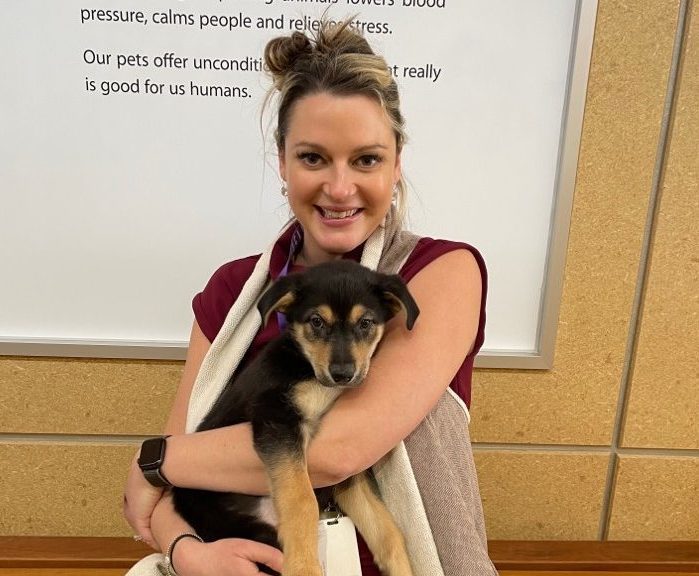
When Numbers Truly Matter.

The absolute hardest part of working in animal welfare and shelter life is dealing with euthanasia.
It is a heavy weight on staff and volunteers, and indefinitely causes compassion fatigue and can lead to mental health issues over time.
When I first started as your CEO a year ago, I decided to sit on the Rounds Committee, a committee made up of leaders from specialty shelter departments, where these types of decisions are made.
We ask ourselves questions such as, ‘is there a live outcome here, is this illness terminal or treatable, is the animal safe to and within the community, can we find a foster to give this animal time to heal before becoming an adoption candidate,’ and so on.
I am pleased to announce this past year enabled us to have the lowest euthanasia rate of all time, 10.48 percent.
Evolution to a Capacity for Care shelter model, a Special Circumstances Fund, enabling us extra resources to help animals that in past years may have been financially out of our reach, and continuing to talk about every single animal that we come across and their very specific and individual needs has found us on a path where we can let out a sigh of relief – we do everything we can.
Incoming animal numbers of over 5000 a year, year over year, are consistent – but we do better, and through discussions we have at the Board of Directors level, we are always striving to find better and innovate ways to transition displaced animals to their new future.
I encourage you to research the benefits a Capacity for Care shelter model enables us as a staff.
Feral cat colonies exist all over the world, and of course Winnipeg, Manitoba is no exception – complete eradication of this issue is beyond reach, but population control among known and managed colonies is key. Our Barn Buddies program not only gives commercial businesses and warehouse owners opportunities to help manage population control, but also gives cats that would not have had a live outcome in a home, as they are not social and prefer their chosen way of life (externally of humans), a chance in a barn.
Why do I mention all of this you ask? It all comes down to helping us keep our euthanasia rate down. External programs are key, community involvement is gold, and letting cats exist in ways they are used to living offers them a live outcome when there wasn’t one.
I will end with a massive thank you to our staff and volunteers who help us drive our mission every day, and to our Board of Directors for dedicating themselves to a sky is the limit approach to animal welfare.
With love and compassion,
Jessica Miller
WHS CEO

